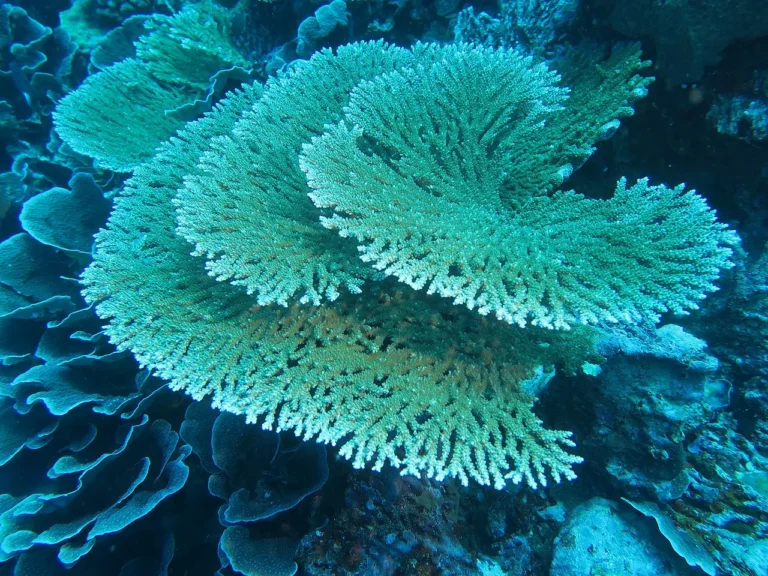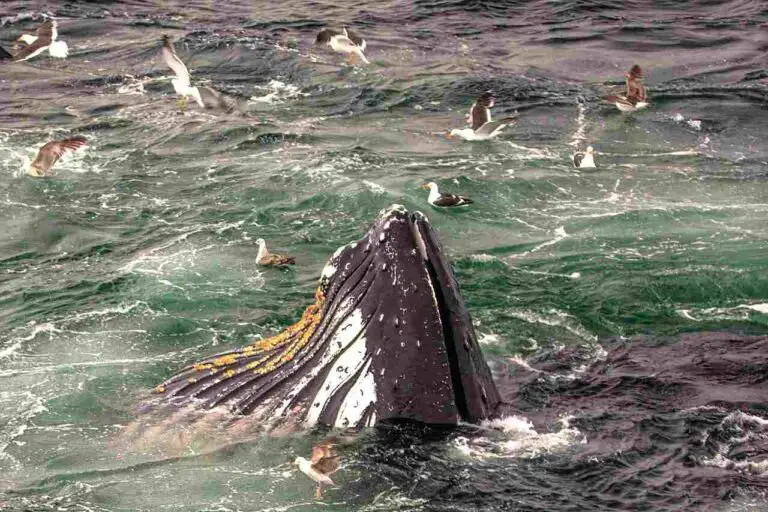7 Causes of Environmental Pollution Explained
Causes of environmental pollution are; natural hazards, biological processes, accidents, transport, waste handling, industrial activities, and agriculture.
This article discusses the causes of environmental pollution, as follows;
1). Natural Hazards (as one of the Causes of Environmental Pollution)
Natural hazards generally lead to environmental degradation, and in many cases this occurs in the form of pollution.
While environmental pollution is itself a hazard, it can be described as one of the environmental impacts of natural hazards.
For example, severe air pollution could result from hazards like wildfires and dust storms [5]. At the same time, these hazards may lead to other forms of environmental degradation; like deforestation and desertification respectively.
Other natural hazards like flooding can lead to stormwater pollution, through which water bodies like rivers and lakes may be polluted.
Earthquakes, volcanic eruption, hurricanes and tsunamis all release materials into the environment that can cause pollution.
Natural hazards can also cause resource depletion, and tend to affect the ecosystem adversely, causing disease outbreaks, death, habitat losses, and economic recession.
2). Biological Processes
Biological processes that lead to environmental pollution are those which involve the release or consumption of bioenergy.
An example is biodegradation; by which organic materials are broken down into simpler products.
Biodegradation of organic materials in exposed locations like landfills, is a major cause of air pollution.
Byproducts of such decomposition include gases like sulfuric oxide and methane, as well as others which produce unpleasant odors, and/or have greenhouse characteristics and contribute to global warming [7].
Biological processes may also cause water and soil pollution through the production and release of leachate (produced from decomposition of organic waste) which can infiltrate the soil and enter into groundwater.
Pathogens released into the environment from biodegradation can cause health problems through drinking polluted water, among other means of contact.
It is important to note that biological processes also offer a potential solution to some cases of environmental pollution.
These cases are namely those involving biodegradable pollutants like hydrocarbons [4]. Microorganisms or plants can be used to breakdown such pollutants in what is known as bioremediation.
3). Accidents (as one of the Causes of Environmental Pollution)
Environmental pollution could also be the outcome of accidents. Such cases are referred to as ‘environmental pollution accident’, or ‘pollution accident’.
Accidents that could cause pollution include those involving storage systems for hazardous waste, hydrocarbons or other materials.
With regards to hydrocarbons, there have been multiple oil spill cases that have resulted from collision between oil tankers, rig explosions, collapse or failure of storage systems, among others [8].
Nuclear power plants may also be the center of pollution accidents. Such accidents, which could be caused by errors due to mismanagement, may result in the release of hazardous amounts of nuclear materials into the environment.
Wildfires, which are a potential cause of air pollution, can result from accidental ignitions within the environs of forests.
Pollution accidents can be very hazardous due to the combined effect of the accident itself and the subsequent pollution, in most cases. Health problems and economic recession, are both potential outcomes of these events.

4). Transport
Transport is a major cause of environmental pollution, due to the size of the transport industry, its crucial role in economic growth, and its heavy dependence on unsustainable sources of energy, like fossil fuels.
The root cause of environmental pollution in the transport sector is energy waste. This problem can take any of various forms.
One of such forms is incomplete combustion. Existing internal combustion engine technologies are not 100% efficient in their handling of fossil fuels to generate electricity or other forms of power. This lack of absolute energy efficiency, is what usually leads to pollution.
Tailpipe emissions from automobiles can significantly reduce air quality, and are a major cause of climate change. Severe respiratory and endocrine health problems have been linked to these emissions [1].
Transport systems cause multiple types of environmental pollution, including air, water, soil and visual pollution.
The scale of transport-related pollution is directly proportional to the scale or level of urbanization and industrialization in a given area.
Vehicular transport is most polluting form of transport, accounting for up to 10% of CO2 emissions globally. It is followed by air transport, which accounts for about 2% global CO2 emissions. These two sources produce about 12% of the nearly 15% global CO2 emissions from the transport sector [3].
Mitigating environmental pollution from transport has been a major objective in the field of sustainable development, and has been the focus of concepts like the energy transition.
In order to achieve sustainability in transport, efforts have been made to integrate renewable energy development with operations in the transport sector. Alternative energy technologies like electric cars, hydrogen fuel cells and hybrid cars, have also been developed to address issues of pollution and resource depletion.
5). Waste Handling (as one of the Causes of Environmental Pollution)
Waste handling, or improper waste handling, is a cause of environmental pollution especially in urban and semi-urban areas.
An improper approach to the disposal or treatment of waste can cause air, water, and soil pollution.
For example, indiscriminate disposal of organic waste (biomass) in landfills or water bodies can cause the release of toxins and pathogens into the environment, as these materials undergo biodegradation.
Inorganic waste can also cause aesthetic pollution through littering, and could cause other forms of degradation like plastic pollution and heavy metal pollution.
Leachate from decomposing waste in landfills can pollute groundwater and pose health risks to humans [6].
Efforts to manage waste can also lead to environmental pollution. Incineration, for example, can cause gaseous and particulate materials to be released into the atmosphere, thereby causing pollution.
Mitigating pollution from waste can be achieved by adopting a circular economic approach, with effective recycling. Organic waste can also be converted to biofuel, which is a source of energy, through waste-to-energy processes like anaerobic digestion.
Socioeconomic issues like population growth and industrialization have been linked to waste pollution. While such changes cannot necessarily be avoided, their negative effects can be controlled by observing the tenets and objectives of sustainable development.

6). Industrial Activities
Pollution that is caused by industrial activities and materials is referred to as industrial pollution.
Industrial activities that can lead to pollution include electricity generation, material processing, recycling, mining, exploration and extraction, and manufacturing.
These activities may have negative ecologic impacts when there are inefficiencies in the transformation or consumption of energy, and in the management of both raw and waste materials.
Industrial pollution is also directly proportional to population growth and urbanization.
Addressing this problem is possible through the development of sustainable methods, materials, policies and regulations. Carbon tax is an example of a policy that is designed to encourage sustainable industrial practices.
7). Agriculture (as one of the Causes of Environmental Pollution)
The raising of livestock and crops can lead to environmental pollution.
Agricultural pollution is simply any decrease in environmental quality that is caused by agricultural methods and materials.
A common instance of this type of pollution is leaching of chemical fertilizer, herbicides and pesticides [2]. Others include the release of air pollutants as a result of bush burning.
Agricultural pollution may lead to soil fertility loss, resource depletion, gaseous toxin release, water pollution, and soil pollution.
Reversing or mitigating the problem is possible through sustainable agricultural practices and principles like cover cropping, crop rotation, organic farming, composting, and permaculture.

Conclusion
Causes of environmental pollution are;
1. Natural Hazards
2. Biological Processes
3. Accidents
4. Transport
5. Waste Handling
6. Industrial Activities
7. Agriculture
References
1). Adeyanju, A. A. (2018). “Effects of Vehicular Emissions on Human Health.” Journal of Clean Energy Technologies. Available at: https://doi.org/10.18178/JOCET.2018.6.6.499. (Accessed 27 October 2022).
2). Aktar, W.; Sengupta, D.; Chowdhury, A. (2009). “Impact of Pesticides Use in Agriculture: Their Benefits and Hazards.” Interdisciplinary Toxicology 2(1):1-12. Available at: https://doi.org/10.2478/v10102-009-0001-7. (Accessed 27 October 2022).
3). Albuquerque, F. D.; Chowdhury, M. R.; Alzarda, T. M. (2020). “Greenhouse gas emissions associated with road transport projects: current status, benchmarking, and assessment tools.” World Conference on Transport Research (WCTR 2019), 26-31 May 2019, Mumbai, India. Available at: https://www.sciencedirect.com/science/article/pii/S2352146520306803. (Accessed 27 October 2022).
4). Bakar, A.; Farinazleen, S.; Ghazali, M.; Zaliha, R. N.; Rahman, R. N.; Basri, M. (2003). “Bioremediation of petroleum hydrocarbon pollution.” Indian Journal of Biotechnology 2:411-425. (Accessed 27 October 2022).
5). Johnston, F.; Hanigan, I.; Henderson, S. B.; Morgan, G.; Bowman, D. M. J. (2011). “Extreme air pollution events from bushfires and dust storms and their association with mortality in Sydney, Australia 1994-2007.” Environmental Research 111(6):811-6. Available at: https://doi.org/10.1016/j.envres.2011.05.007. (Accessed 27 October 2022).
6). Lee, G. F.; Jones-Lee, A. (1993). “Groundwater pollution by municipal landfills: Leachate composition, detection and water quality significance.” Available at: https://www.researchgate.net/publication/311570455_Groundwater_pollution_by_municipal_landfills_Leachate_composition_detection_and_water_quality_significance. (Accessed 27 October 2022).
7). Nêrweyî, N. (2022). “Impacts of greenhouse gas emissions on ambient air quality in kwashe municipal solid waste landfill in Kurdistan region, Iraq.” Available at: https://doi.org/10.22034/ecc.2022.334227.1379. (Accessed 27 October 2022).
8). Sun, S.; Lu, Y.; Liu, Y.; Wang, M.; Hu, C. (2018). “Tracking an Oil Tanker Collision and Spilled Oils in the East China Sea Using Multisensor Day and Night Satellite Imagery.” Geophysical Research Letters 45(24). Available at: https://doi.org/10.1002/2018GL077433. (Accessed 27 October 2022).





